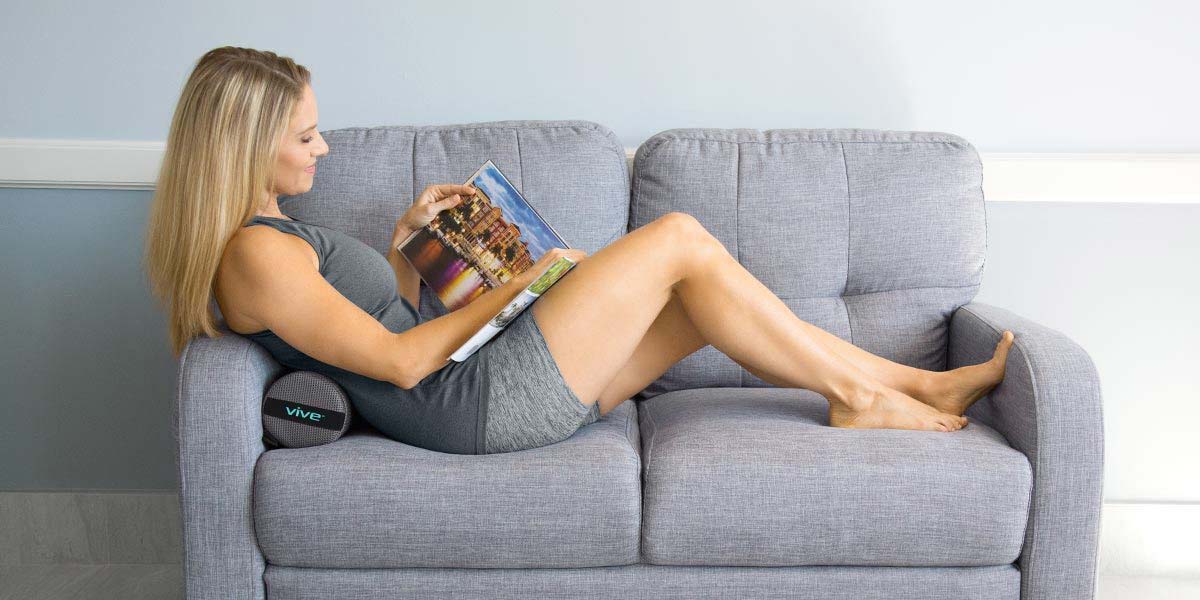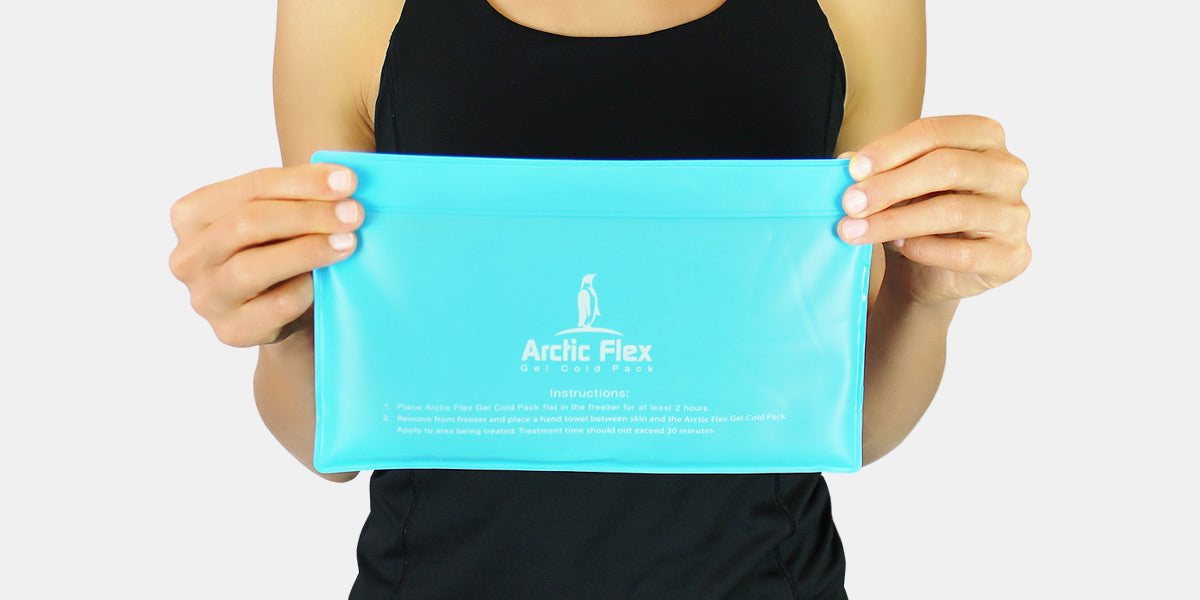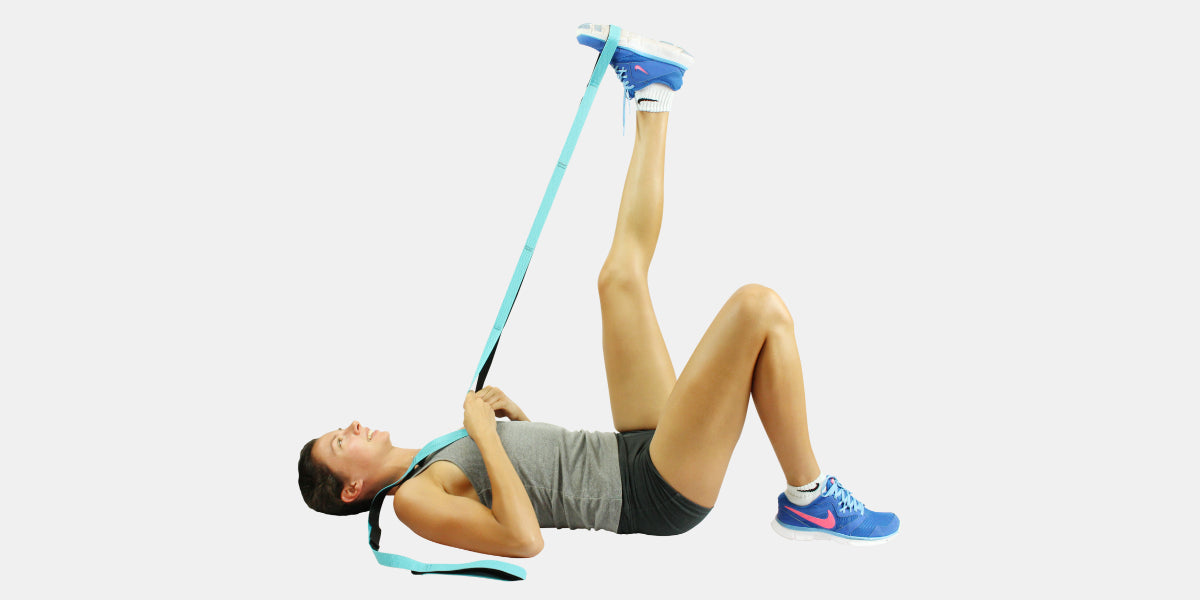800-487-3808
800-487-3808

Back pain when coughing or sneezing is caused by increased pressure within the spinal canal, resulting in sharp lower back pain. It’s not just sneezing and coughing...letting out a yawn, overstretching, or even laughing can cause the same discomfort. That’s because the muscles in the lower back are responsible for holding the bones of your spinal canal in place and connect to nerves stretching throughout the entire body. If you’ve ever suffered from back-related injuries, your muscles and ligaments are even more vulnerable. Hear what our expert, Dr. Jerome Fryer, has to say about protecting your back. Learn more on what you can do to avoid back pain when coughing or sneezing and the most common causes.
As Dr. Fryer explains, many people instinctively hunch forward when they cough or sneeze. But this is one of the worst things you can do. It causes the pressure inside the discs of the spine to increase by a whopping 300 percent! And, if you happen to have a little tear in a disc, bending forward too quickly can cause pressure on the nerve, which leads to sudden back pain.
So, if you’re one of the many people who experience back pain when coughing or sneezing, be sure to try Dr. Fryer’s quick-fix tips:
When most people cough or sneeze, they immediately hunch forward, rounding their back. But this is one of the worst things you can do. To reduce pressure in the spinal discs and prevent discomfort, make sure your back keeps its natural arch when you cough or sneeze.
If you feel a cough or sneeze coming on, simply place your hand down on something like a desk or ledge. This decreases the compressive effects on the spine.
While the above quick tips are incredibly effective, they’re not always enough to effectively treat back pain. For maximum pain relief, try the following:
Resting your back doesn’t mean staying bed-bound for weeks. It simply means taking time out of the activities that cause or exacerbate your back pain. In fact, too much bed rest may make your back pain worse.
For maximum benefits, don’t lie down for more than a few hours at a time, and never for more than two days. Stay comfortable and reduce pressure on the discs and muscles by placing a pillow under your knees when lying on your back, or between your knees when lying on your side.
The lumbar is the naturally curved region of the lower spine. When the lumbar is forced outward—as it frequently is when we cough or sneeze—it leads to lower back pain.
To prevent this from happening and to avoid long-term back pain, try a lumbar chair support. These cushions reduce strain on the lower back and prevent stiffness and pain. Long-term use even corrects the poor posture that may be responsible for your back problems.
Compare Seat Cushions & Lumbar Supports Here
Lumbar chair supports are a convenient and made to fit all different seats. If you're planning a road trip or spend lots of time behind the wheel be sure to check out the 13 Best Lumbar Supports for Car Use
 An inflatable lumbar cushion gives you the power to customize your support & the attachment strap makes it easy to move from chair to chair. ( See Product )
An inflatable lumbar cushion gives you the power to customize your support & the attachment strap makes it easy to move from chair to chair. ( See Product )
A Lower Back Brace can help to relieve lower back pain caused by strains and sprains, helping you to recover faster from injury, soothe chronic pain or muscle spasms, promote good posture, and protect your back from re injury. The brace stabilizes your back and relieves the stress on your spine
If you're constantly experiencing back pain when coughing or sneezing a good back brace can offer fast and lasting results over time. There are different back braces you can choose from. Be sure to pick the one that will enable you to work, exercise, and live your life without compromising comfort. You can check out our list of Top 10 Best Back Braces for Lower Back Pain here.
Remember, always choose a fit that is secure so that the brace doesn’t bunch or slip.
Using ice to alleviate pain and inflammation is an age-old treatment. Cold therapy—also known as cryotherapy—constricts or narrows the blood vessels and contracts the muscles to stop swelling and to reduce pain signals.
You can ice your back when it’s actively causing you pain, or as a preventative technique after coughing, sneezing, or physical activity. For best results, apply an ice pack for fifteen to thirty minutes at a time, as often as required. Compare the industry's top-selling back ice packs here.
Just be sure to avoid ice for muscle knots or muscle spasms as cold sensations can worsen these types of pain.
 Applying ice or using cold therapy on sore or tight muscles helps to reduce inflammation to start relieving pain ( See Product )
Applying ice or using cold therapy on sore or tight muscles helps to reduce inflammation to start relieving pain ( See Product )
Heat can treat several types of back pain and is especially useful for treating muscle knots and cramping or aching muscles.
Heat therapy works by widening the blood vessels to increase circulation. Increased circulation brings extra nutrients and oxygen to the damaged tissues, helping to speed up healing while ridding the body of waste materials. Apply a Heating Pad or take a warm bath for up to twenty minutes at a time, one to three times daily.
However, heat can make inflammation worse, so it should not be used in the first 72 hours following a new injury.
More on when to use heat for injuries.
If you’d like to enjoy the benefits of both ice and heat, why not alternate the two therapies—a process known as contrast therapy? You can learn all about Alternating Hot and Cold Therapy here.

TENS therapy can be extremely beneficial to those who suffer from back pain on a regular basis. Portable units make it easy to administer a TENS therapy massage from home! ( See Product )
Transcutaneous Electrical Nerve Stimulation (TENS) is a type of therapy that uses low voltage electrical current to relax the muscles and alleviate the symptoms of back pain. TENS works for sore muscles, inflammation, and joint problems, and is a great way to treat back pain caused by coughing or sneezing. The good news is that you don’t have to go to a hospital or fancy clinic to receive TENS treatment—you can carry it out in the comfort of your own home!
Remember: it’s vital to consult your doctor before beginning TENS treatment.
How to Choose the Best TENS Unit
Both the American College of Physicians and the American Pain Society strongly recommend that people with lower back pain stay active.
Staying stationary all day, especially working at a desk, causes strain on the back and neck. Of course, a lack of physical activity also contributes to weight gain, which exacerbates back pain.
Regular physical activity gets the heart pumping and the blood circulating. This blood flow has positive effects on the muscles, joints, ligaments, and tendons—keeping them flexible and strong right into old age. Exercise also encourages fluid and nutrient exchange between spinal discs.
So, the next time you put your back out from a sneeze or cough, take a three-pronged approach to pain relief. Try gentle stretches to stay flexible, work on strengthening your core, and engage in low-impact aerobic activities such as walking, swimming, or using an elliptical machine.
 Assisted stretching with the use of stretch out straps make it easy to achieve deeper stretches. Try leg and hamstring stretches help to loosen tight lower backs ( See Product )
Assisted stretching with the use of stretch out straps make it easy to achieve deeper stretches. Try leg and hamstring stretches help to loosen tight lower backs ( See Product )
Those whose back pain is caused or exacerbated by standing for long periods of time should invest in high-quality insoles and shoes. Finding the right insoles and footwear can prevent shock and impact from traveling through the feet, up the legs, and into muscles of the lumbar region.
Always choose shoes with good arch and heel support, and get rid of shoes that show obvious signs of wear and tear on the heels or sole. For maximum shock-absorption when working out, replace your athletic shoes every six months.
Also, be sure to check out our list of the 10 Best Insoles for Standing All Day to reduce your risk of back pain and discomfort.
Back pain is a common problem for those who are overweight or obese. That’s because there is additional pressure on the spinal discs, muscles, and ligaments. Add regular coughing or sneezing into the mix, and you have a recipe for chronic back pain.
Losing excess pounds could make a big difference to your back pain and overall sense of wellbeing. To do this, exercise regularly and enjoy a balanced and portion-controlled diet. Don’t forget to invest in a good-quality Digital Scales so you can track your weight loss success story! Choose one of these 10 Best Scales for Body Fat here.
Improper lifting techniques are a common cause of back pain. To reduce your risk of back injury, keep your elbows and knees slightly bent when lifting. Always use your legs, and not your back, for power. You should also take care not to bend and twist simultaneously. If you lift weights at the gym, ask a fitness professional for advice on proper form.
Sometimes, the spongy disks between our vertebrae can become damaged and push against the nerves in our spinal cord. While a herniated disc doesn’t always cause pain and discomfort, oftentimes it does. Learn more about the risk factors and symptoms of a herniated disc here.
A sneeze or a cough can irritate these regions or cause them to press harder against sensitive areas of the spine. This will create a sharp burst of pain each time it happens.
Your sciatic nerve runs down the length of your spine, through the pelvis, and down each of your legs. It’s the longest and thickest nerve in the body, making it vulnerable to pain from various sources. Sciatica pain is caused by spinal problems which pinch or compress the nerve.
Coughing or sneezing can exacerbate sciatic nerve pain, creating pain and numbness in the lower back and legs.
Once you've suffered previous back strains or injuries tiny tears develop within the muscles and ligaments of your back. The preexisting damage makes you vulnerable to pain when coughing or sneezing.
If you inadvertently stretch the lower back too far with a strain (cough or sneeze) or movement (overreaching), the already weakened muscles have made the spine less stable and easily subjected to lower, upper, or even right side back pain.

It’s easy to go overboard using your back - especially when repeatedly lifting heavy loads or doing an activity that strains the back for an extended period of time, like gardening or cleaning. Overuse and sudden, awkward movements can cause muscle spasms and tension as well as tears and strains in the muscles and ligaments that support the back.

A good night’s sleep is vital to maintaining a strong and pain-free back. Old and unsupportive mattresses can cause back pain by not properly supporting the spine and keeping it alignment while you sleep. The less sleep you get because of a bad mattress, the worse you will feel during the day, affecting overall health, attitude and eating habits too.
An alternating pressure mattress may be the way to ensure a better night's sleep.

Stress and depression can indirectly manifest themselves as back pain, typically from a drastic increase in muscle tension. People experiencing stress and anxiety can, in turn, behave in ways that negatively affect back health by staying inactive, practicing bad posture and not eating well.

Slumping, leaning and craning the neck are all postures that can lead to chronic back pain. The more hunched over your back is when sitting and standing, the more strain it places on the muscles, reducing circulation and leading to inflammation and pain.
To support your back while out and about, try a posture corrector today!

Sitting in the same position for long periods of time, whether using the computer, driving to work or watching television, places significant pressure on your spine and can even strain the neck and shoulder muscles. Studies show that spending significant amounts of time sitting each day also heightens the risk for obesity, diabetes and heart disease, all of which promote inactivity and immobility that can lead to back pain too.
Seat cushions can be another way to ensure comfort for long periods at the desk.
Cushions the lumbar region to support spine relieving pain and pressure on the back and hips.
View ProductProvides optimal support and reinforces the lower back without restricting motion for back pain relief.
View ProductApply consistent heat that provides soothing heat therapy to your back with this electric heating pad.
View ProductEase tired back muscles with personalized TENS therapy. Choose between 2 intensity levels and 8 different massage modes.
View ProductImprove flexibility and prevent injury by achieving more effective stretches using this stretch strap.
View ProductHelp relieve lower back pain with proper foot support by utilizing foot orthotics for adequate alignment.
View ProductApply pain cream to sore back muscles for instant and soothing cold relief that lasts.
View ProductRemember, there is a multitude of reasons for lower back pain such as chronic conditions like scoliosis, sciatica, arthritis, or herniated vertebrae. Be sure to check with your doctor if you suffer from numbness, weakness in your legs, or bowel or bladder problems. These could be signs of underlying conditions, so be sure to seek immediate medical attention.
Once an underlying condition has been ruled out, there are many other steps you can take to prevent back pain when coughing or sneezing, or when engaging in everyday tasks. Some of the most effective include using a lower back brace, investing in supports such as lumbar cushions and shoe inserts, and staying physically active. It’s also important to maintain proper form when lifting, stretching, and sitting. Finally, remember Dr. Fryer’s expert tips to reduce pressure on the spine when coughing or sneezing, and you may just say goodbye to back pain for good!
Video Credit: Dr. Jerome Fryer - Dynamic Disc Design for Patient Education
https://www.youtube.com/watch?v=CppdxG-apjQ&t=15s
https://www.spine-health.com/conditions/spine-anatomy/spinal-discs
https://www.webmd.com/back-pain/ss/slideshow-low-back-pain-overview
Comments
Leave a comment